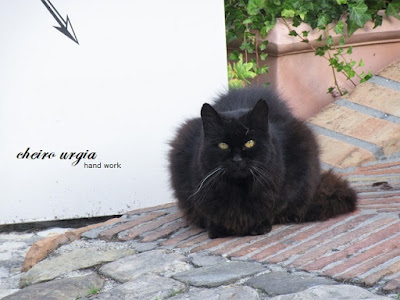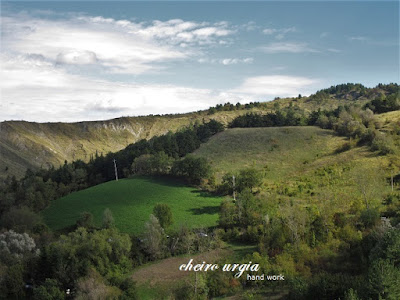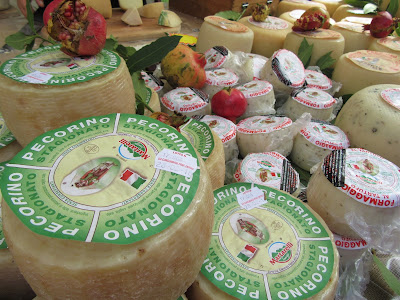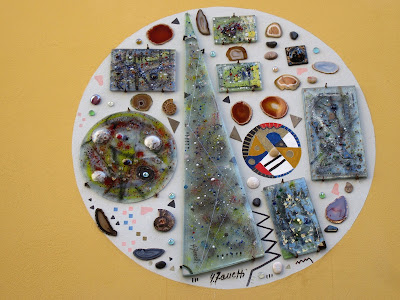Another stunning good-morning kiss from Rimini, and already it was time to start our journey towards home.
However, we'd soon have a small break in the ancient settlement Verucchio, the origin of the Malatesta family which we've been meeting in one way or another for the past couple of days. Unfortunately, the Malatesta fortress itself was closed, as were most other things on an early Italian morning. Alternatively, we stretched our legs on the steep narrow streets...
... before we continued to our main stop of the day.
Sant'Agata Feltira awaited us in a seemingly peaceful atmosphere, which soon turned out to be something along the lines of the calm before the storm.
The convent of St. Jerome, now Museum of Country Crafts, sure is a quiet spot just outside of the city center. The former monastery is probably most known as a place where people with disabilities had the opportunity to learn traditional handcrafts from weaving to pottery and creating simple decorations by using natural resources such as wood and straw.
Many of their products are on display nowadays, alongside with the tools that were used in the production. Additionally, one can see numerous examples of religious art, too, such as different variations of the nativity scene...
... including a Christmas story that was turned into a detailed mechanical display of various village figures.
Apart from that, the whole building is a trip to long-gone times, full of items that "today's youth" probably doesn't even know anymore.
Back to the modern age, we headed towards the centre of Sant'Agata, where a vivid crowd of people gathered to celebrate the annual White Truffle Fair.
Before pleasing our stomachs, though, we'd fight our way to the top of the hill, where yet another castle fortress would await us.
And since the time of medieval knights and robberies is long gone, the complex is now known as the "Fairytale Castle" which takes the visitor on a magical journey through the history of stories and storytelling.
From ancient fairytales to modern ones, the exhibition is probably most suitable for kids, but will not bore grown-ups either if they have at least a little bit of a kid left inside.
Back to reality, the Truffle festival was in full swing. We'd fight our way through the packed streets, past castle-related exhibits...
... until we'd reach the city center with its snail fountain...
... and the beautiful Teatro Angelo Mariani, one of the oldest Italian theatres which is made completely out of wood.
And here they were - countless market stalls with a display of various handworks: from all kinds of decorations, clothing, and local crafts, to all kinds of food, pastries and cooking ingredients.
Of course, the lead part was played by truffles in different variations...
... but the was also a wide range of cheese and smoked products...
... seasonal harvest...
... and much, much more. At some point, fighting the crowds didn't make much sense anymore. Rather than that, one would just flow with them, trying to maneuver past people, dogs, and baby strollers, while catching samples here and there.
And after the sampling almost made up for a whole lunch, we'd move on to our final destination: Dozza.
The city of art is guarded by yet another massive fortress, but it's main attraction for sure are the houses itself. Namely, their colourful facades which are created by various international artists during the biannual Festival of the painted wall.
Needless to say, the "City of art" is an open-air museum with walk-through halls in form of streets and squares - all full of unique artistic pieces, that seem to blend into each other somehow despite different techniques and colours being used.
Finally, on a late autumn afternoon, we'd cross the Po river, which is always a good indicator of being almost home. Turns out, Italy can be the country of loud, chaotic, and dirty cities. But it also hides countless of (more or less) hidden gems, beautiful nature and a cuisine that is beyond yummi. And I'll definitely want to see more of it soon.
~ the end ~






















































































No comments:
Post a Comment